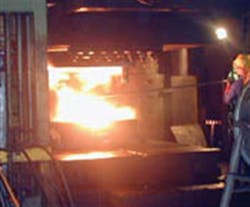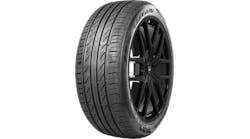Let's face it: The primary reason that the consumer buys a custom wheel is to enhance vehicle appearance. Aside from wheel design and size, the final surface treatment, or finish, is the sizzle that sells.
Terms like "chrome," "powder coat" and "polished" are commonly used by manufacturers and marketers alike in the wheel industry. Here's a clarification of these labels for a basic understanding of what's involved in each wheel finish approach, as well as sensible tips on cleaning and maintaining these various finishes.
"Chrome" plating is applied by means of an electroplating process.
Two basic types of chrome plating are in use, including both hard-chrome and decorative or nickel-chrome. Hard-chrome provides a hard surface to the parent material to resist wear on items such as piston rings, cylinder rods, mold surfaces, etc. Hard-chrome is not the process used to "decorate" automotive components such as bumpers, wheels, etc. Instead, "decorative" chrome plating is employed for custom wheels.
After the wheel is either cast or forged, the wheel is finish-machined on a CNC (Computer Numeric Control) machine. If the wheel is then to be chrome plated, it is buffed to a high luster in preparation for the plating process.
[PAGEBREAK]
In terms of alloy wheels, nickel-chrome plating involves first applying a copper plating base layer that provides the wheel with additional corrosion resistance. After this copper layer is buffed to a high shine, a layer of nickel plating is applied to the wheel, which provides the required bright and reflective layer (the bright nickel is what you actually see on a chrome wheel). Chrome plating is then applied, which generates a "bluish" cast to the part, and actually serves as a protective "clearcoat" to prevent the nickel from tarnishing. This may surprise many folks who assume that the chrome layer provides the bright finish.
Only one layer of chrome is applied. If two layers of chrome were applied, the result would be a white, milky appearance.
Cleaning and maintaining a chrome-plated wheel is actually quite simple, but precautions should be observed. It's best to wait until the wheel has cooled before applying any soaps, cleaners or waxes. This is of special concern with some spray-on wheel cleaners, which may contain acids.
While an acidic wheel cleaner should never be used on chrome, any cleaner with an acid base will gain strength when heated. Spraying an acid-type wheel cleaner onto a hot wheel can discolor or further damage a chrome finish. Once the wheel is clean, a wax may be applied, but stay away from cleaner waxes or other materials which might contain an abrasive mix.
Powder coating is a process that involves applying "dry paint" (in powder form) to a surface, followed by oven-curing, which melts and flows the dry powder paint.
The two methods of powder coat application are dipping the part into a fluidized bed of powder, or spraying the powder in an electrostatic charge.
[PAGEBREAK]
Regardless of the method of application, the part is then heated to approximately 320 to 410 degrees Fahrenheit. This causes the powder to melt, creating a continuous film coating.
Once cured, powder coating provides a very durable protective finish that is highly resistant to chipping, peeling or cracking and weather/road condition exposure.
A number of powder variations, in terms of their chemical makeup, exist. Some of the specific types of powder paint used by most wheel manufacturers are somewhat proprietary (some powders are thermoplastic or thermosetting in nature, and either re-flow if re-exposed to high heat levels or do not re-flow due to special cross-linking polymers in their formula). Suffice it to say that today's quality wheel makers use powder paints that are designed for use in automotive wheel environments.
The material or part to be powder coated must be cleaned and prepared if proper adhesion of the powder coat is expected. Any oils, greases or other contaminants must be removed, which may involve rinsing the part in a weak alkali or neutral detergent solution, and etching to remove heavy oxides.
If the powder is sprayed onto the part, it is done with an electrostatic spray gun (or in a powder-emitting tunnel) while the part to be sprayed is grounded. Because the powder particles are electrostatically charged, the powder wraps around the part, covering all surfaces. The powder will remain on the surface as long as the electrostatic charge is present (if the part is bumped during transport into the curing oven, the powder can fall off).
Powder coating on custom wheels is an effective way to not only protect the base wheel material, but also add and enhance color. Powders are available in clear as well as in a wide variety of colors.
Maintaining a powder-coated wheel is relatively simple. Washing with soapy water (a neutral detergent) and rinsing should remove any surface contaminants. If stubborn road tar or other materials must be removed, use a bug and tar remover or wax and grease remover, then rinse with clean water. Although a quality powder coat is extremely durable, the same rules that apply to the maintenance of chrome-plated wheels should be observed.
[PAGEBREAK]
Stay away from acid-based cleaners, and never apply cleaners or waxes when the wheel is hot. Avoid the use of abrasive cleaners and abrasive polishing compounds as well.
In addition to chrome plating on wheels such as Topline's Verde Spayde and Vain wheels and United Wheel Corp.'s UW5 and UW8, alloy wheels can be powder coated, or produced in a machined/polished surface that may or may not be finished with a clear powder coat.
One example is Ultra Wheel's new "Ultra Finish," which is achieved by final-machining the surface with a CNC diamond bit that runs at very high speeds. This provides a high and rich luster without the need to plate or clear. Performed on the company's cast alloys, this diamond bit finishing can be used on only specific wheel designs where flat surfaces (spokes) are present. American Tire Distributors’ new Drifz line has three styles that feature the same treatment: 515, 517 and 518.
Another example of a "bare" alloy surface is Alcoa's line of forged alloy wheels. These are made of very dense 6061 alloy (aerospace grade) that is heated to a working temperature and forged to shape. The forging is then CNC machined to its final dimensions and shape, followed by surface polishing.
While the majority of Alcoa aftermarket wheels are polished forgings with no clearcoat (the polished alloy is extremely dense, and with proper care will maintain a high shine for years), Alcoa also offers a few select wheel models that feature a powder clearcoat.
[PAGEBREAK]
ANODIZING WHEELS: A chemical reaction with staying power
Anodizing is not a "plating" or "coating." Rather, it is a chemical treatment that oxidizes the alloy in a special manner to achieve a harder surface. This can involve a clear anodizing or the addition of special dyes to produce a specific color.
Unlike chrome plating or powder coating, anodizing is a process wherein the clear or desired color actually becomes part of the parent alloy surface. As a result, anodizing does not add weight or change the component's dimensions, since no add-on surface buildup takes place.
If a degree of gloss is desired, the aluminum is first polished, then anodized (since anodizing produces a translucent clear or color, the parent metal must be polished).
Some performance and racing wheels are treated to an anodized finish, either to enhance durability and/or appearance. Anodizing only can be applied to non-ferrous material such as aluminum, and generally only to aluminum that has been machined from billet stock as opposed to an alloy casting.
WHAT TO LOOK FOR WHEN INSPECTING WHEELS
1. Bent rims on steel or alloy wheels (if deformation damage extends into the bead seat area, the wheel should be replaced).
2. Cracked rims on alloy wheels (inspect closely -- if cracks extend into the bead seat area, the wheel should be replaced).
[PAGEBREAK]
3. Fractures/missing material on alloy rims (curb contact/pothole damage/collision damage resulting in cracks or loss of material).
4. Cracks on alloy wheel spokes (any cracks found on structural areas indicates a need for wheel replacement).
5. Damaged fastener seat areas (especially on alloys, inspect the seats for gouges, cracks and galling, which could indicate excessive fastener tightening or damage caused by dirty/gritty seat mating faces).
6. Damaged bolt holes (elongated or deformed holes caused by wheel movement that results from inadequate fastener tightening or missing fasteners).
7. Runout (this is easily checked on-car with a dial indicator. If runout exceeds 0.004 inch, suspect a bent wheel, damaged hub or worn/damaged wheel bearings. If excessive runout is found at the mounted wheel, record the high spot, remove the wheel, and check the hub itself for runout to isolate the source of the problem).
8. Corrosion (not only with regard to cosmetics, but for extensive corrosion that could weaken the wheel's integrity; and for pinholes in the bead and well areas that could lead to pressure leakage).




